How To: Food Forest, Land Grows Justice
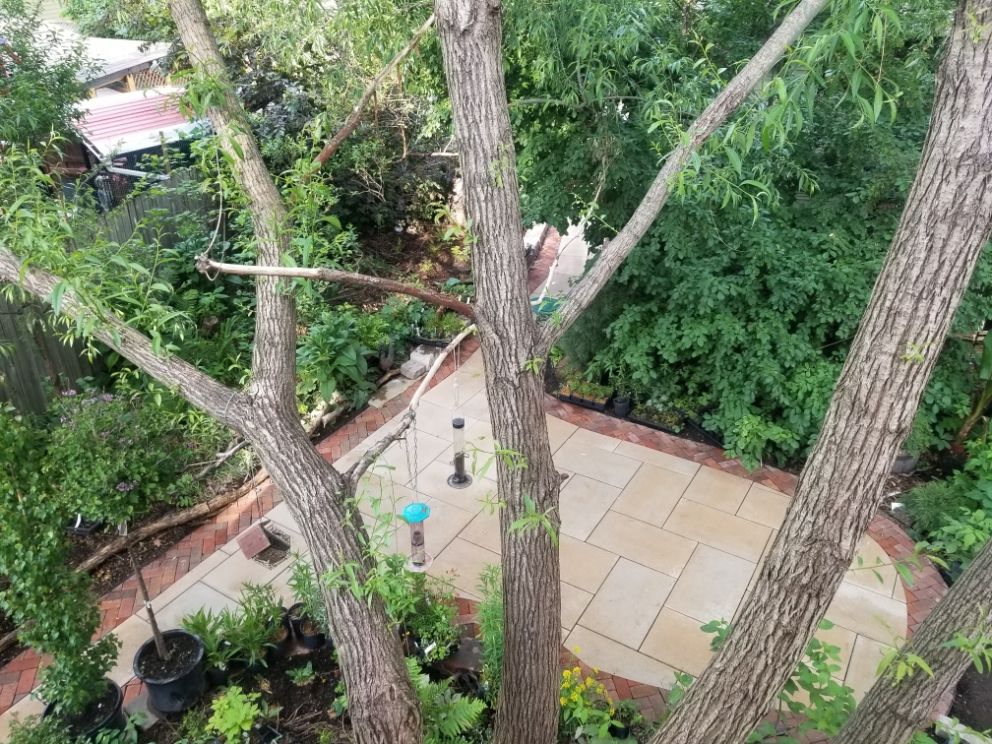
Standing in front of a classroom full of 6th graders, I ask them “Is the Earth doing OK?”.
The entire room erupts with a solid “NO!”
“OK,” I say. “What are some of the problems facing the planet today?”
Kids shout out: “viruses!” “climate change!” “animals dying!” “pollution!” “war!” and dozens of other responses.
One student, Aiza, raises her hand patiently waiting for the rest of the kids to stop shouting calamities.
“Can we do anything about it?” she asks, breaking my heart in two.
A student joins the Global Climate Strike rally in Athens, Greece, September 20, 2019. “23 Reasons to Climate § Strike Today –Take to the Streets” Bill McKibben, founder of climate change campaign 350.org,
Yes, Aiza, we can do something about it.
We can, and for the health of all these 6th graders and their generation, we must do everything we can to reverse climate change and grow health.
In order to figure out where we’re going, it helps to know where we’ve been.
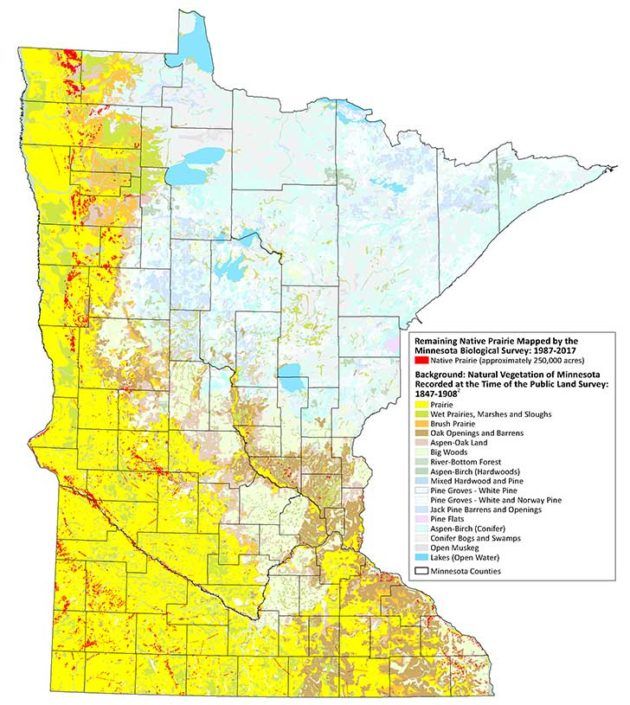
The land in North America has been divided and conquered by roads, farms, and cities.
Only a shadow of the once mighty ecosystems that existed here are left in place due to massive human disturbances we call development and agriculture.
Only remnants of native ecosystems are all that remain in small, often reconstructed portions of land.
Over 99% of Minnesota’s native prairies have been permanently destroyed. Over 99% of Minnesota’s old growth pine forests are gone forever.
What is left of forest in Minnesota has been driven back to early succession forest species such as aspen, ash, birch, maple, oak, elm, and several understory varieties.
Forests overall in MN have been reduced to fewer than 18 million acres from a pre-colonial era estimate of around 31.5 million forested acres.
The sheer scale of the ecosystem destruction that occurred in MN is overwhelming to think about.
Using lumber from that year alone, Minnesota could have built a 9’ wide boardwalk all the way around the Earth at the equator.
In under 100 years the Minnesota logging industry removed more than 68 billion board feet of pine from this state’s forests. That’s enough lumber to fill boxcars from the Earth to the Moon and halfway back again.
In 1900, the peak year of white pine logging, over 2.3 billion board feet of lumber was cut from the state’s forests.
The ecosystem in this place was literally cut down and turned into buildings, products, and fuel, most of which are now also gone.
The pine forests of Minnesota took thousands of years to form and only 100 years to destroy.
Minnesota’s Remaining Native Prairie a Century after the Public Land Survey. Native prairie records 1847-1908 (shown in yellows and tans). Remaining native prairie mapped 1987- 2017 (shown in red).
Minnesota Prairie Conservation Plan, MN DNR
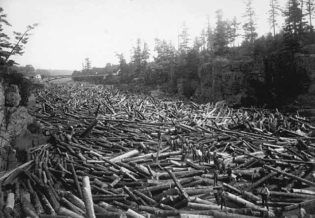
The 1886 log jam in the Dalles of the St. Croix River Minnesota Historical Society

Minnesota Forest History (12,000 years ago to present)
Genocide of Native American people and the wholesale destruction of all North American ecosystems from colonization is a moral burden which all European descended people in America must wake up to and begin bearing with humility.
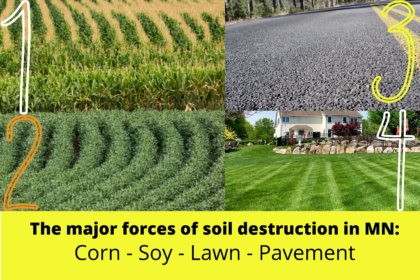
Native plant communities on private land and state and national parks are essentially a scab covering the giant wound left after logging and development swept through the landscape.
These young, vulnerable, and largely unmanaged forests have proven to be easily invadable by non-native species as plants and insects migrate across the land encouraged by widespread ecosystem disturbance.
Our current management of land has transformed a vast unbroken ecosystem into a struggling landscape losing species to extinction and losing more ground to corn, soy, lawn, and pavement every day.
Healthy Soil, Healthy Planet: Sequestering Carbon, Cleaning Water, and Saving Pollinators In Your Own Yard
There is hope for Aiza and her generation and we’re standing on it.
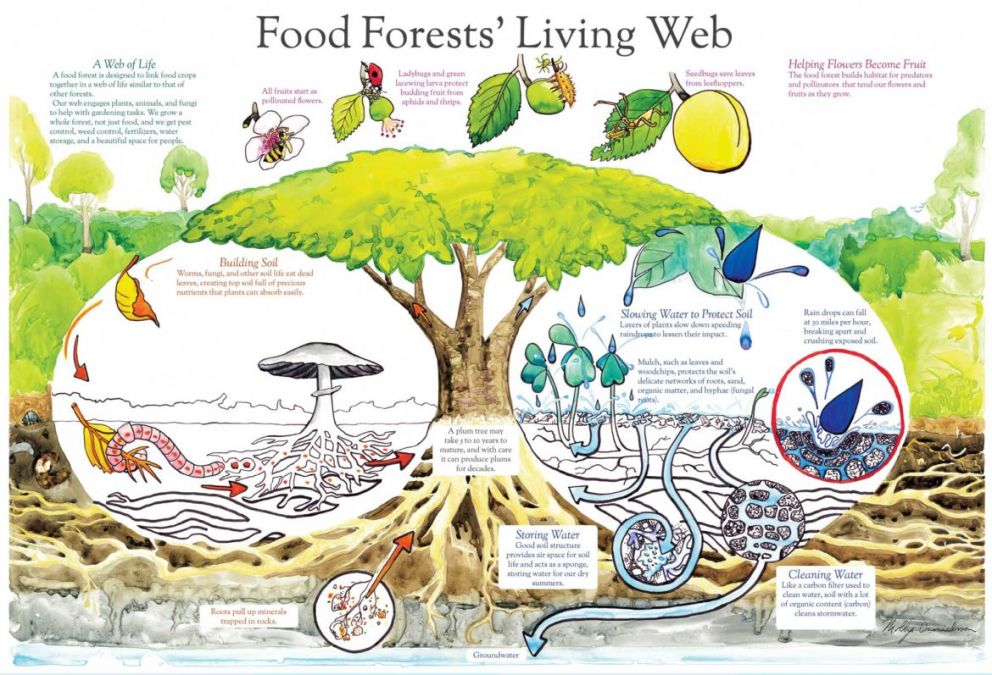
A Web of Life: Build & Protect Soil – Clean & Store Water – Grow Food from Permaculture Action Network
A food forest is a space for growing food to feed your family, sharing produce with hungry people in our communities, and simultaneously growing food for wild animals, all while sequestering carbon, and filtering rain water in healthy soil.
Food forests are among the greatest and most just uses of the small pockets of wild land that still exist in populated areas like the Twin Cities.
In a food forest, fungi-rich soils that provide an ecological foundation for an above ground menagerie filled with a menagerie of edible native plants and wildlife.
Food forests grown on public, accessible land have the potential to grow justice, health, and community restoration from the ground up.
Much as the destruction of native habitat has wrought illness and discord into modern life, every action we take to collectively regrow native habitat will have future cascading benefits of healing and reconciliation for generations to come.
Here's a list of plants for anyone who wants to grow a food forest at home.
Ground Covers
Canadian White Violet (viola canadensis): Good for helping to thicken a soup, these easy to grow, native ground covers can be found throughout woodlands all over Minnesota. Leaves and flowers are great for salads.
Ramps (Allium tricoccum): Excellent onion to sauté with morel mushrooms and fiddle head ferns. This often over-exploited plant needs to be planted in abundance throughout wilderness areas to help restore its full native distribution.
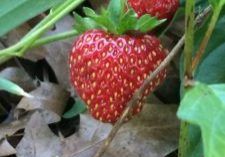
Wild Strawberry (Fragaria virginiana): Small but so sweet! Grows in meadows and forests in dappled sunlight. High wildlife value and an absolute delight to encounter on a walk through the woods in June.
Virginia Waterleaf (Hydrophyllum virginianum): Multiple edible parts on this strong spreading, shade loving native ground cover. Leaves are slightly fuzzy but the fuzz is not noticeable when they’re cooked or blended into a bowl of salad greens.
Self-Heal (Prunella vulgaris): Edible leaves and flowers, this bee-friendly lawn plant loves cool, moist soil and will help establish a new food forest planting when used as a ground cover in conjunction with white clover. Highly medicinal due to an abundance of antioxidants.
Bunchberry (Cornus canadensis): Mature fruit and seeds are edible. Not the tastiest treat, but high in vitamin C and flavonoids so they can be an important part of a foragers diet. High wildlife value.
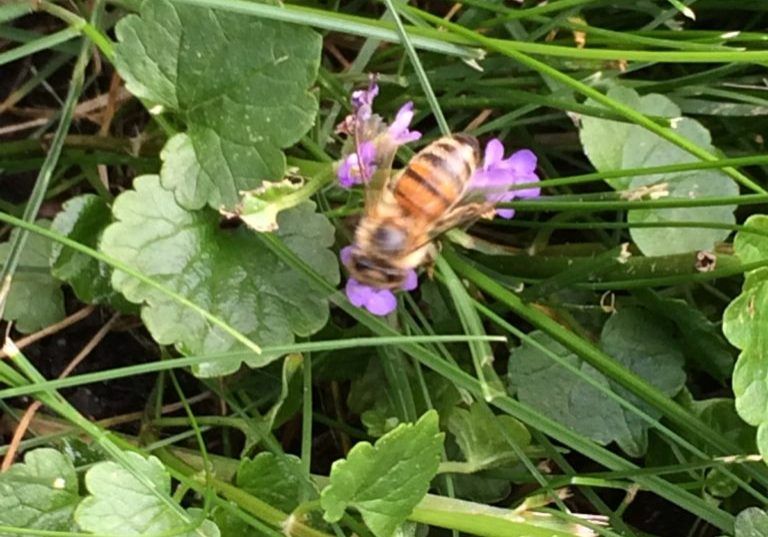
Good Time Charlie (Glechoma hederacea): Also known as Creeping Charlie, this old boy is no creep at all and is in fact a very good friend of bees and butterflies. He’s such a good guy, we gave him a new name. Good Time Charlie is mowable, walkable, drought resistant, and pollinator friendly, this edible plant has something for everyone. If anything should highlight how far down the wrong path we’ve gone in Earth care, it’s our relationship with Good Time Charlie. Convinced by chemical companies to kill our good friend Charles with toxic herbicides precisely because of the tenacious ground covering habit that we should love it for. Charlie is free ground cover, perfect for helping to establish perennials, shrubs, and trees. We encourage folks to grow old Chuck as a living mulch beneath taller plants.
Trees
Black Walnut (Juglans nigra): The nuts are edible for people, birds, and small mammals, can also be used to make black dye. Walnut and their cousin butternut trees have high wildlife value although they are often maligned for their allopathic relationships with other plants due to their production of juglone that is poisonous to many other plant species. Dogwood and serviceberry do well enough near walnut to make them a good pairing in the food forest.

White Pine (Pinus strobus): Needles grow in clusters of 5 and can be used to make tea rich in vitamin C. White pines are expected to be a climate change winner here in Minnesota. These glorious trees used to cover most of the state. Eagles will often nest in the tops of mature white pine trees.
Oak (Quercus spp.): Acorns from a variety of oak species are edible and were once a staple in the diet of some Native American people. White oaks have fewer bitter tannins in the acorns and are sometimes eaten raw while acorns from red oaks need to be boiled multiple times to eliminate the tannins. Acorns can be ground into a flour and used to replace wheat flour or corn meal.
Hickory (Carya spp.): Shagbark hickory produces delicious edible nuts. Experiments are being conducted by the MN Dept of Natural Resources and the Forest Service are experimenting with planting southern bitternut hickory and black cherry in northern Minnesota forests to see how they fair in a rapidly changing climate. Many species that comprise MN forests may no longer be able to grow here by the end of the century. Introduction of some southern varieties is a strategy to grow resiliency in the face of climate change.
American Chestnut (Castanea dentata): New hybridized varieties are being developed in Minnesota to regrow the mighty chestnut tree that once dominated but was almost entirely removed from North American forests as the chestnut blight fungal disease spread across the continent.
Basswood or Linden (Tilia americana): Edible leaves, flowers, fruits, seeds, sap, and bark. Important source of nectar in the spring for native and honey bees. Beautiful trees that always seem to be filled with songbirds.
Downy Serviceberry (Crataegus spp.): Edible fruit on multi-stemmed trunks. White flowers in May. Mammals and birds love the blue-black fruit that comes in June. This plant has many common names including; saskatoon, shadberry, and juneberry.
Paw paw (Asimina triloba): Large edible fruits, considered a delicacy because it is rare and difficult to grow, a Missouri native that has been successfully grown in Minnesota for a number of years. Paw paw is creamy, smooth, sweet and can be compared to mango or pear.
Red Mulberry (Morus rubra): Delicious, easy to grow fruit. Attracts birds in droves. Place a tarp under the tree and shake the tree to harvest berries when they are ripe.
Perennials
Ostrich Fern (Matteuccia struthiopteris): Sauté the curled up “fiddle heads” after harvesting in early spring. Delightful to pair with ramps and morel mushrooms.
Day Lilly (Hemerocallis fulv): A mild tasting, delicious relative of the onion, every part of the daylily is edible. Eat the flowers, flower buds, young stalks, root tubers, and the base of the scape. Chop up for soups, salads, and sautés.
Common Milkweed (Asclepias syriaca): Eat the young shoots like they were asparagus. Learn to identify the differences between common milkweed and dogbane, a look-alike that is poisonous and can be easily distinguished from milkweed because milkweed has a hairy stem and dogbane does not. Common milkweed is the breeding habitat for monarch butterflies and should be added to every food forest.
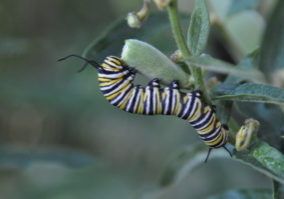
Wild Asparagus (sparagus officinalis): This plant escaped cultivation many decades ago and naturalized in Minnesota woods. Great addition to the food forest. Plant roots in ditches with medium height grasses like little blue stem or prairie drop seed.
Prairie Onion (Allium stellatum): Strongly flavored edible bulbs can be eaten raw or cooked.
Sunchoke (Helianthus tuberosus): This tuberous sunflower plant produces an edible root sometimes called a Jerusalem artichoke. Easy to grow, and one of the very last to bloom this plant is loved by bees, birds, small mammals, and people alike.
Beebalm, Echinacea, Mountain Mint, Chamomile, Prairie Sage, and Anise Hyssop can all be used as medicinal teas or culinary spices.
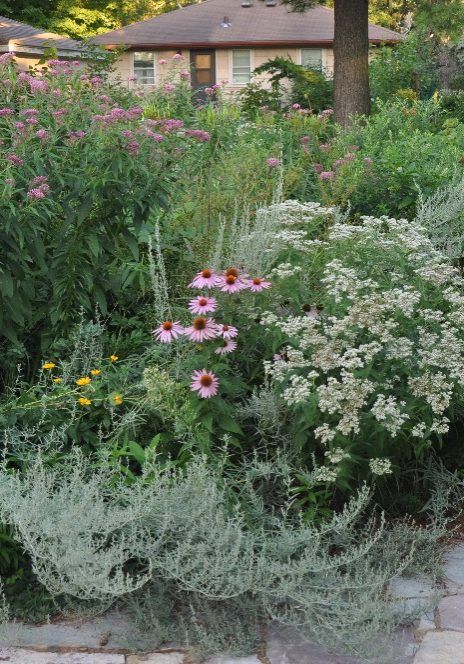
Shrubs
Hazelnut (Corylus americana): High wildlife value plant that produces edible nuts. Grows to 8’ tall, this sturdy shrub is a welcome addition to any food forest.
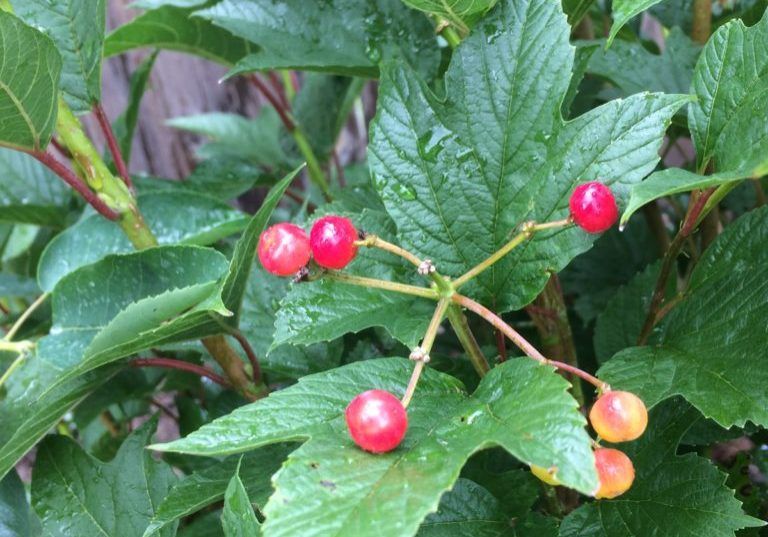
Highbush Cranberry (Viburnum trilobum): While not a true cranberry, this shrub produces delicious edible fruit that are tart and sweet and can be easily found dried on the vine for a trail snack. Different varieties grow between 6’ and 13’ tall. Its height combines with its shade tolerance to make viburnum an excellent under-story shrub in the food forest.
Chokecherry (Prunus Virginiana): An absolute bird magnet when the cherries begin to ripen. This 8-12’ tall shrub forms dense thickets especially in clearings near bodies of water. While the name sounds alarming, these cherries have a delicious bitter cherry taste. Best if ripened till the cherries are purple black
Black Cap Raspberry (Rubus occidentalis): Amazingly delicious, every food forest needs a few stands of black caps. High wildlife value, easy to grow, forms dense thickets. Pies, jams, berries, my favorite berry to find on a summer day.
Gooseberry (Ribes missouriensis): This tart fruit also known as a currant grows across the US. Eat raw or in a jelly, jam, pie, or tart.
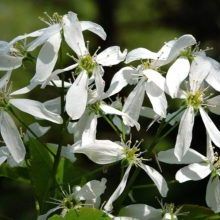
Service Berry (Amelanchier alnifolia ‘Regent’): 4-6’ tall shrub that produces berries in June and readily attracts birds. Lovely airy form of the shrub allows for fruiting ground cover such as wild strawberry beneath.
Lowbush Blueberry (Vaccinium angustifolium): A common treat in northern MN forests, the lowbush blueberry is one of the most prolific berries in northern woodlands. High wildlife value, excellent human food source.
Elderberry (Sambucus canadensis): It’s a race to harvest any elderberries before the birds. High in antioxidants, this sweet-tart fruit should be harvested before the seeds get too big inside the berries.
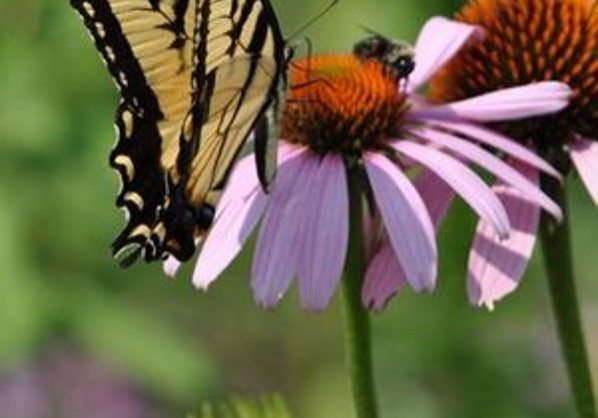
Butterfly on Echinacea
Edible Weeds
Dandelion (Taraxacum): Free food and medicine grow all around us, the dandelion is a perfect example. Fully naturalized in America, this weedy plant loves recently disturbed, bacterially dominated soils. A wonderful plant for adding organic matter to soil, almost every dandelion root has an earthworm or two nearby.
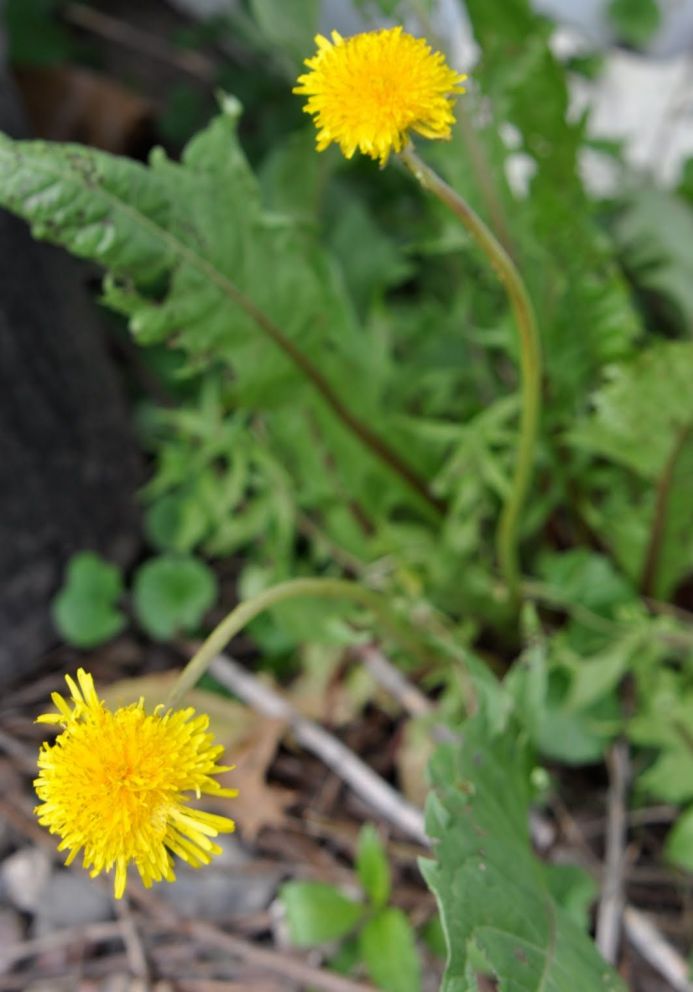
Stinging Nettle (Urtica dioica): Nettle must be cooked. The famously stingy plants lose their stinging hairs when cooked or dried. Highly nutritious, this plants young leaves, stems, and roots are all edible. Great substitute for spinach in a soup. Readily grows in
recently disturbed soils.
Lamb’s Quarters (Chenopodium album): Better for you than spinach, eat the leaves, stems, shoots, and flowers. Cook to remove the small amount of oxalic acid in the plant, or eat small amounts raw. The delicious and nutritious grain, quinoa is a relative of lamb’s quarters. Sometimes called ‘dirt dick’ by farmers for its propensity to grow on compost and manure piles. I prefer to call it ‘delicious dick’ so folks remember it’s a great thing to put in your mouth. Loves disturbed soils.
Purslane (Portulaca oleracea): A little bit crunchy with a slightly lemony taste, this sun loving, low growing weed is a perfect way to add some zest to your salad. Be careful to identify its succulent leaves as different than one of its lookalikes, the poisonous Hairy
Stemmed Spurge. Relative of moss roses, grows easily in sunny, disturbed soils.
Wood sorrel (Oxalis): My favorite edible weed. This plant grows in almost every landscape in central and southern Minnesota that I’ve been to. Tastes lemony and is purported to have anti-depressant qualities. The heart shaped leaves are the first sign that you might fall in love with this weed. Loves dappled sunlight, tastes amazing.
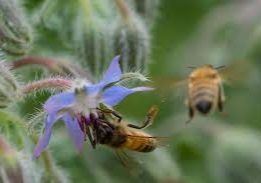
Borage (Borago officinalis): Also called starflower, the flowers of this blue beauty can be added raw to salads. Leaves can be cooked to remove the hairs. Often used medicinally to reduce a fever. Borage is an easy to grow, lovely herb to have in the garden.
Amaranth (Amaranthus): Often called “love lies bleeding” this ornamental edible was once a staple in kitchen gardens. Graceful arching stems hold thousands of seeds each making the larger selections of amaranth a cereal worth growing. Leaves of amaranth are also edible, continue to trim off low growing leaves through the season so your plants perpetually produce.
Garlic Mustard (Alliaria petiolate): Recent immigrant Hmong foragers have been demonstrating the delicious nature of garlic mustard in Minnesota for a few decades. Gathered all through the spring, these spicy leaved plants are a culinary delight. With edible flowers, leaves, roots, and seeds, this plant can make many low-cost meals that are packed with flavor and nutrition. Often treated like an invader to be eradicated, poisoning this plant in public spaces like parks can lead to foragers being poisoned with herbicides. A perfect plant to harvest and share.
Edible Mushrooms
Do not eat any wild mushrooms unless they have been properly identified by a qualified professional. Some wild mushrooms are deadly. You may want to join the Minnesota Mycological Society to learn more about mushroom raging. These edible wild mushrooms grow all over woodlands in Minnesota and can be added as spores to a food forest.
Chicken of the Woods (Laetiporus sulphureus): Only eat chicken of the woods if it’s growing on a non-coniferous and non-honey locust trees. Harvesting from living oak trees is the best bet because it’s easy to identify oak leaves. Mushroomy taste with a slightly mealy texture. Sometimes only the new growing edge of the mushroom will be soft enough to harvest and cook. Some folks say it tastes like chicken, others say it’s more like crab or lobster. One of the yummiest delights in Minnesota woods. This mushroom sometimes causes gastrointestinal issues. Try a little of any wild mushroom before eating a large quantity to make sure it doesn’t cause you a stomach ache.
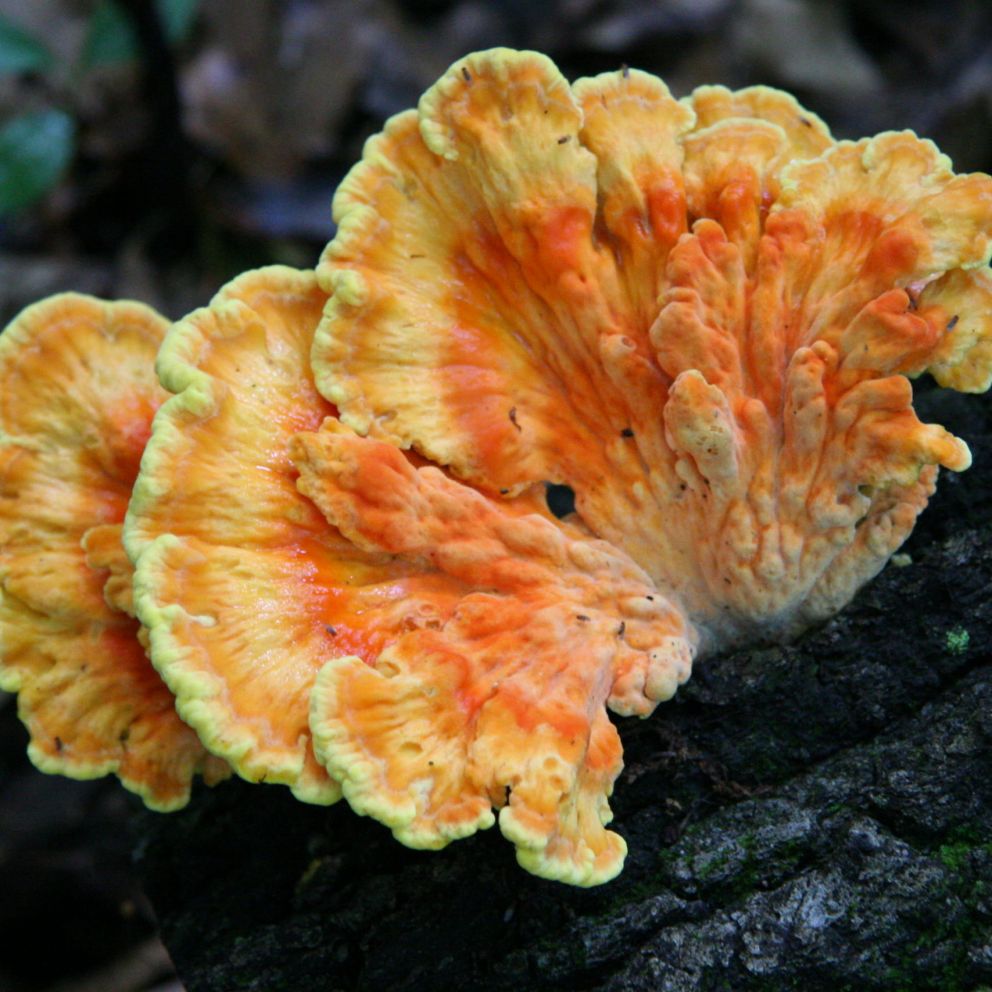
Giant Puff-ball (Calvatia gigantean): This awesome mushroom grows between 4 and 27 inches wide. A large puff ball can feed a family for a couple weeks. Excellent with marinara sauce or stir fried. Only eat if the interior flesh is completely white. Never wash with water because the mushroom will soak up water and become soggy. Easy to find along the Mississippi river gorge in summer.
Common Morel (Morchella esculenta): Deer, elk, and moose share our love for this little mushroom. An absolute delight to eat, sauté with butter and ramps. Found all over North America as well as Asia, Europe, and Central America. Especially found in sandy woodlands growing on the base of dead elm, sycamore, apple, and ash trees.
